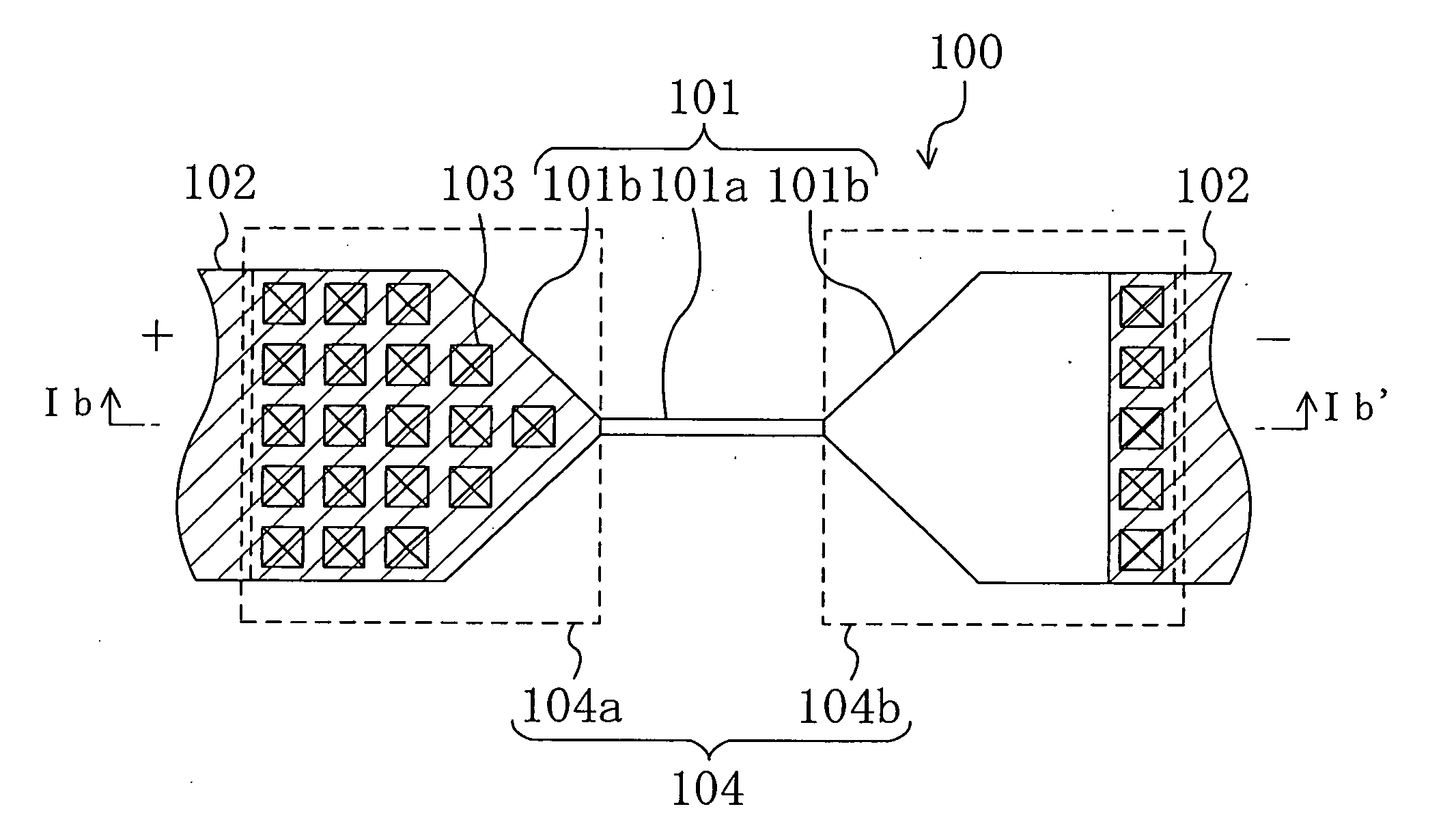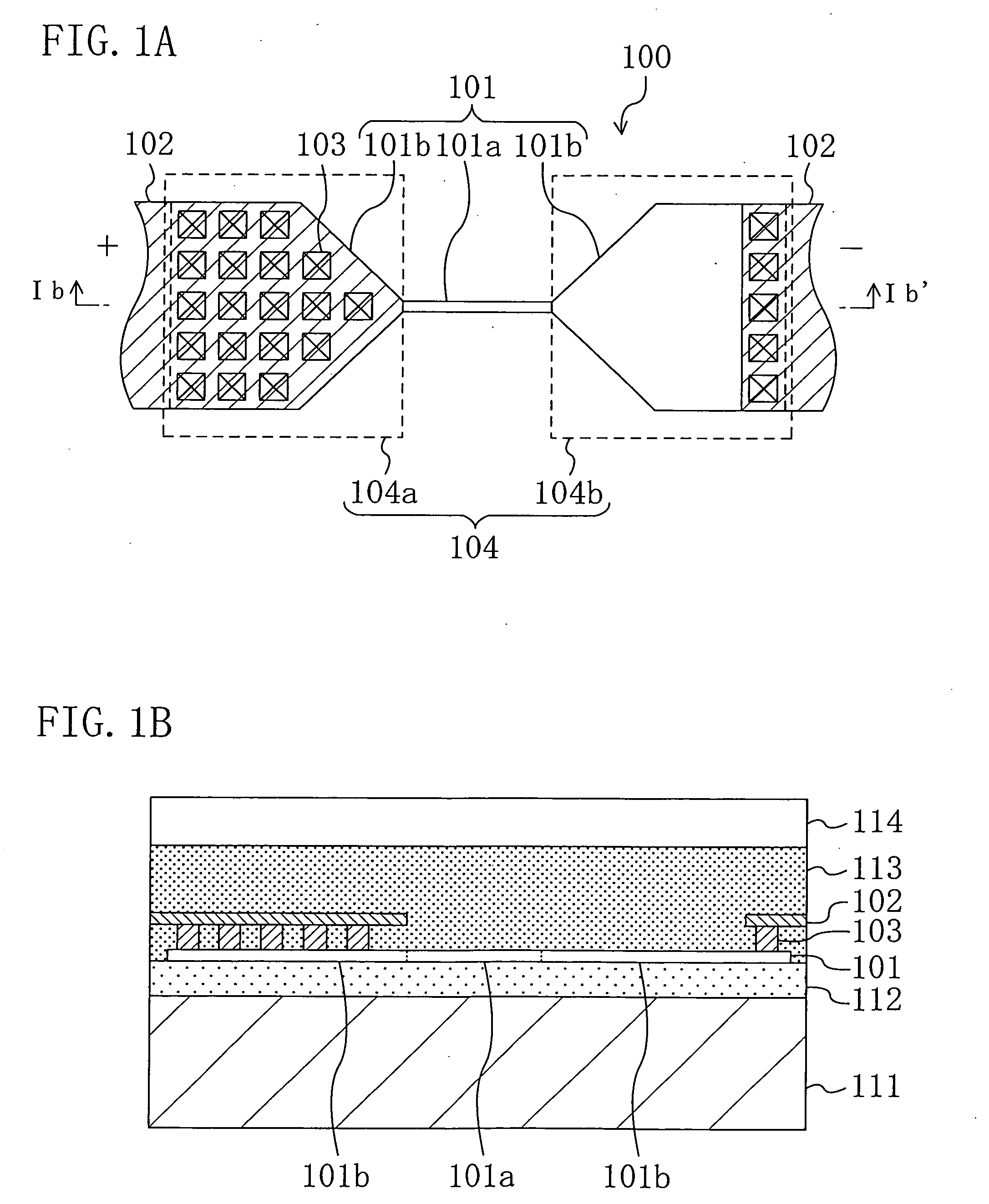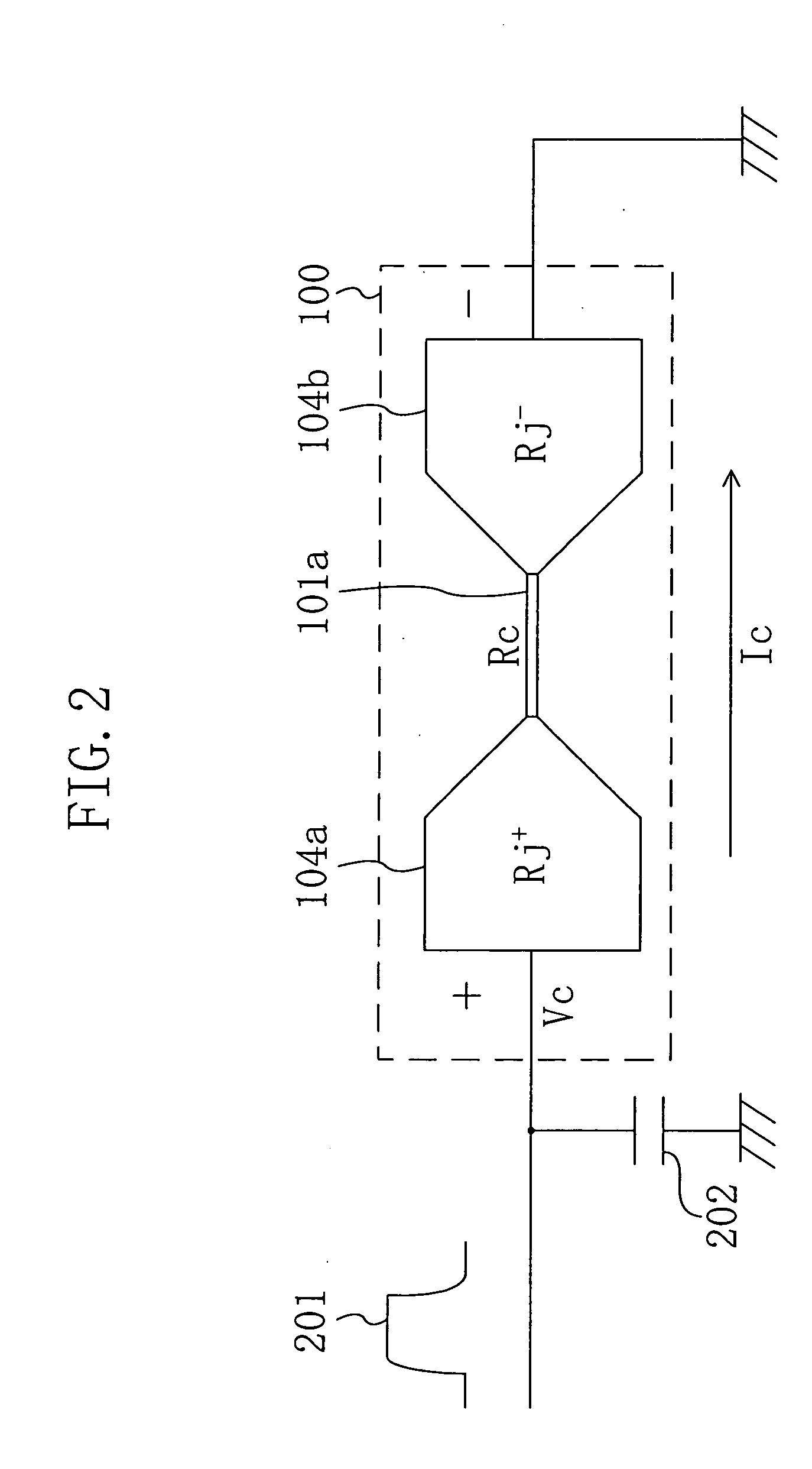Fuse and write method for fuse
a fuse and write method technology, applied in the field of fuse, can solve the problems of large write current, and achieve the effects of preventing the increase of the whole chip area, reducing the write voltage and the write current, and preventing the increase of the cell area of the driving transistor
- Summary
- Abstract
- Description
- Claims
- Application Information
AI Technical Summary
Benefits of technology
Problems solved by technology
Method used
Image
Examples
embodiment 1
[0117]FIGS. 1A and 1B are diagrams of a semiconductor device including a polysilicon fuse according to Embodiment 1, and specifically, FIG. 1A is a plan view thereof where the polysilicon fuse 100 alone is perspectively shown and FIG. 1B is a cross-sectional view taken on line Ib-lb′ of FIG. 1A.
[0118] As shown in FIG. 1A, the polysilicon fuse 100 includes a fuse layer 101, an interconnect layer 102 and contacts 103 for electrically connecting the fuse layer 101 and the interconnect layer 102 to each other.
[0119] The fuse layer 101 is composed of a fusing part 101a to be fused through voltage application and a connecting part 101b connected to each end of the fusing part 101a, and at least a portion of each connecting part 101b disposed on the other side of the fusing part 101a is used as an interconnect region (not shown) to be connected to the interconnect layer 102.
[0120] Also, an interconnect (not shown) is connected to the polysilicon fuse 100 for voltage application or the l...
embodiment 2
[0146] A polysilicon fuse according to Embodiment 2 of the invention will now be described.
[0147]FIGS. 3A and 3B are diagrams of a semiconductor device including a polysilicon fuse according to Embodiment 2, and specifically, FIG. 3A is a plan view thereof where the polysilicon fuse 200 alone is perspectively shown and FIG. 3B is a cross-sectional view taken on line IIIb-IIIb′ of FIG. 3A.
[0148] In FIGS. 3A and 3B, like reference numerals are used to refer to like elements used in Embodiment 1 shown in FIGS. 1A and 1B and the detailed description is herein omitted.
[0149] The polysilicon fuse 200 of this embodiment is different from that of Embodiment 1 in the width of the negative terminal side joint 104b being smaller than that of the positive terminal side joint 104a, whereas the “width” herein means a width of the positive terminal side joint 104a or the negative terminal side joint 104b excluding its tapered portion in the vicinity of the fusing part 101a.
[0150] Since the res...
embodiment 3
[0154] A polysilicon fuse according to Embodiment 3 of the invention will now be described.
[0155]FIGS. 4A and 4B are diagrams of a semiconductor device including a polysilicon fuse according to Embodiment 3, and specifically, FIG. 4A is a plan view thereof where the polysilicon fuse 300 alone is perspectively shown and FIG. 4B is a cross-sectional view taken on line IVb-IVb′ of FIG. 4A.
[0156] In FIGS. 4A and 4B, like reference numerals are used to refer to like elements used in Embodiment 1 shown in FIGS. 1A and 1B and the detailed description is herein omitted.
[0157] The polysilicon fuse 300 of this embodiment is different from that of Embodiment 1 in the negative terminal side joint 104b being narrower than the positive terminal side joint 104a in the vicinity of the fusing part 101a. This will now be specifically described.
[0158] The positive terminal side joint 104a is in a taper shape that is linearly tapered toward the fusing part 101a from a position away by a given dista...
PUM
 Login to View More
Login to View More Abstract
Description
Claims
Application Information
 Login to View More
Login to View More - R&D
- Intellectual Property
- Life Sciences
- Materials
- Tech Scout
- Unparalleled Data Quality
- Higher Quality Content
- 60% Fewer Hallucinations
Browse by: Latest US Patents, China's latest patents, Technical Efficacy Thesaurus, Application Domain, Technology Topic, Popular Technical Reports.
© 2025 PatSnap. All rights reserved.Legal|Privacy policy|Modern Slavery Act Transparency Statement|Sitemap|About US| Contact US: help@patsnap.com



